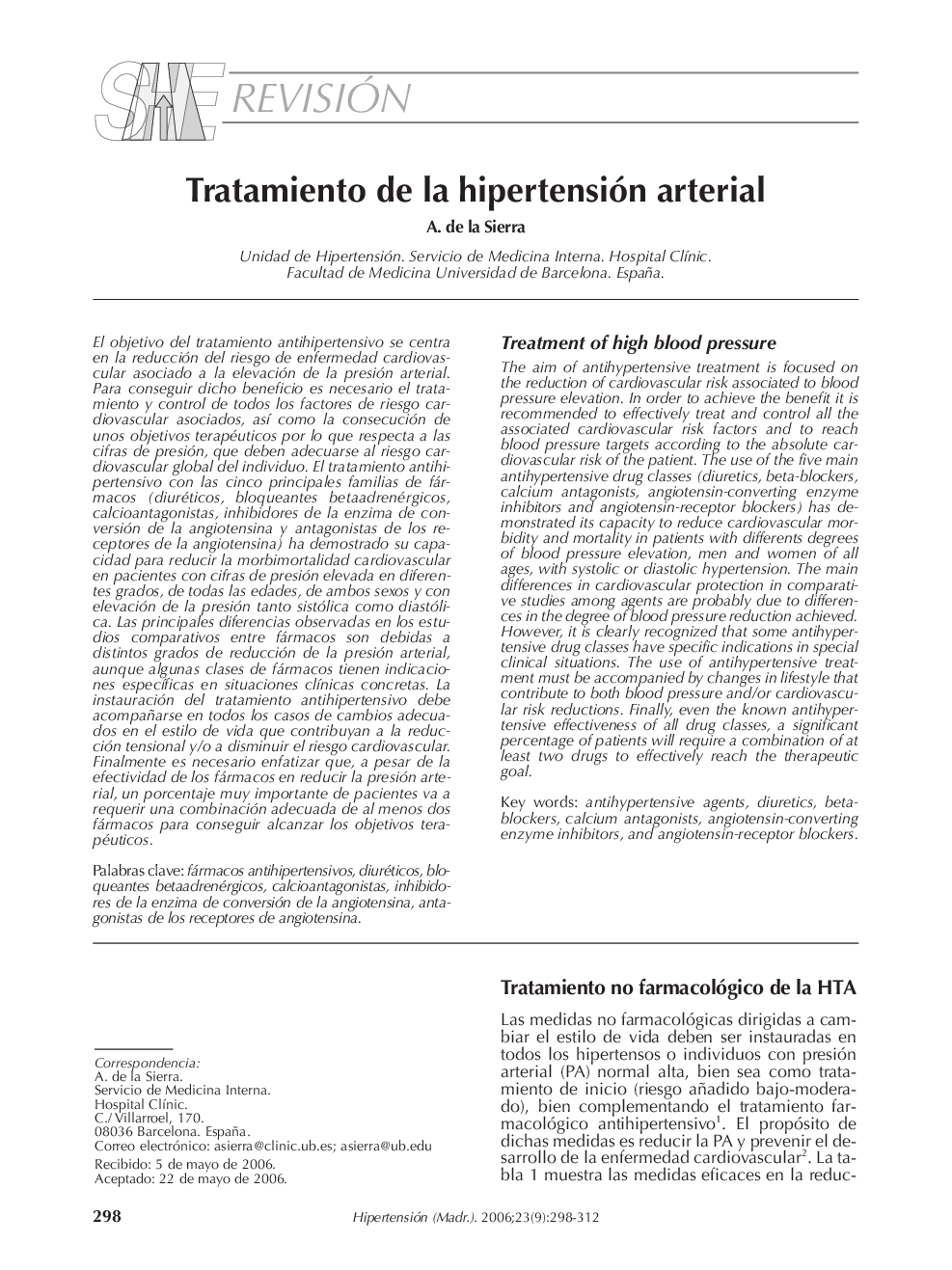| Article ID | Journal | Published Year | Pages | File Type |
|---|---|---|---|---|
| 2926148 | Hipertensión | 2006 | 15 Pages |
Abstract
The aim of antihypertensive treatment is focused on the reduction of cardiovascular risk associated to blood pressure elevation. In order to achieve the benefit it is recommended to effectively treat and control all the associated cardiovascular risk factors and to reach blood pressure targets according to the absolute cardiovascular risk of the patient. The use of the five main antihypertensive drug classes (diuretics, beta-blockers, calcium antagonists, angiotensin-converting enzyme inhibitors and angiotensin-receptor blockers) has demonstrated its capacity to reduce cardiovascular morbidity and mortality in patients with differents degrees of blood pressure elevation, men and women of all ages, with systolic or diastolic hypertension. The main differences in cardiovascular protection in comparative studies among agents are probably due to differences in the degree of blood pressure reduction achieved. However, it is clearly recognized that some antihypertensive drug classes have specific indications in special clinical situations. The use of antihypertensive treatment must be accompanied by changes in lifestyle that contribute to both blood pressure and/or cardiovascular risk reductions. Finally, even the known antihypertensive effectiveness of all drug classes, a significant percentage of patients will require a combination of at least two drugs to effectively reach the therapeutic goal.
Keywords
Related Topics
Health Sciences
Medicine and Dentistry
Cardiology and Cardiovascular Medicine
Authors
A. de la Sierra,
